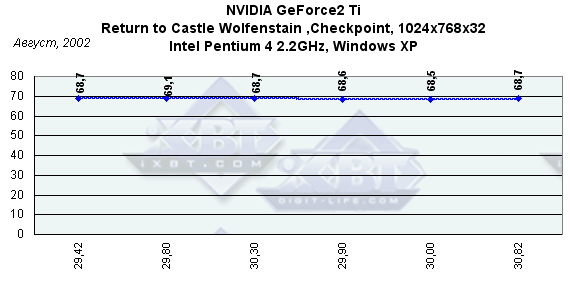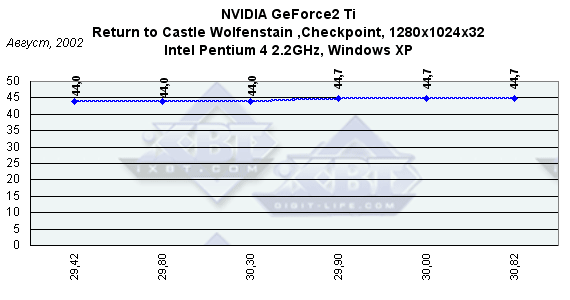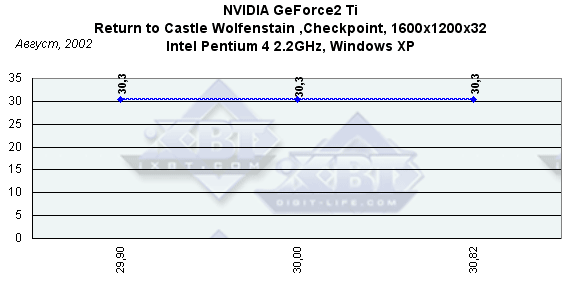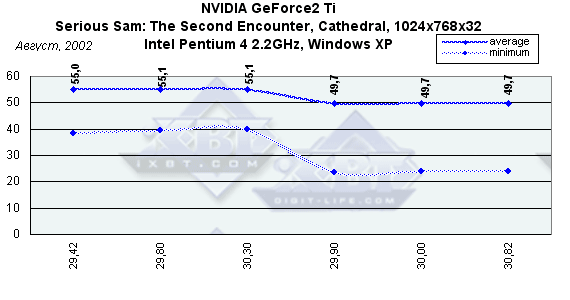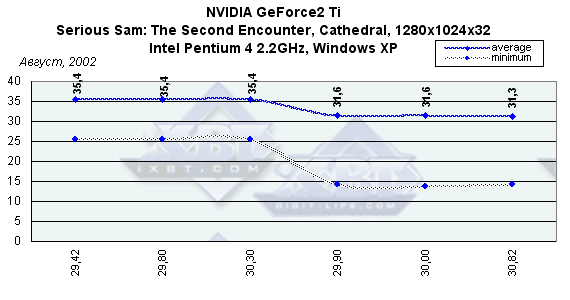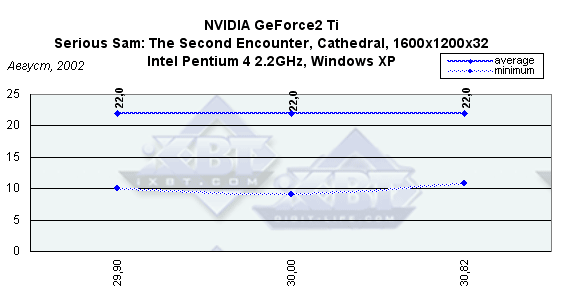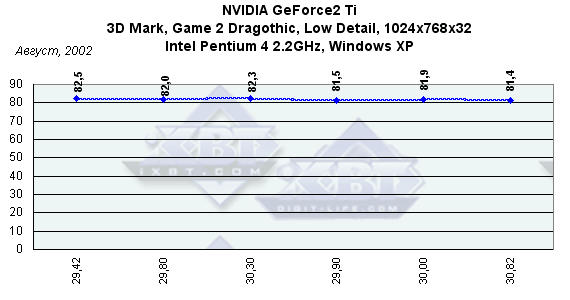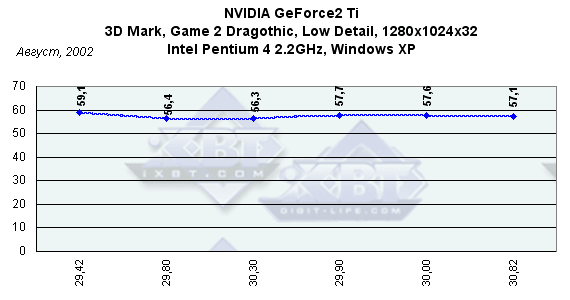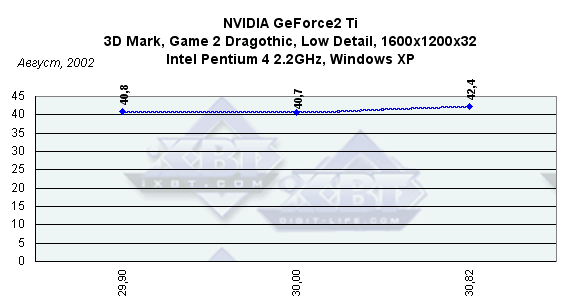This chip is presented by Gainward GeForce2 Ti/500 XP Golden Sample 64MB, AGP videocard.
Features:
- NVIDIA GeForce2 Ti chip, 250MHz clock rate; 250 MHz;
- 64MB DDR SDRAM memory in 8 Hynix 4ns microchips, 200 (400) MHz clock rate in normal (not Turbo) mode 200 (400) MHz, 128-bit bus;
- Peak fill rate in the multitexturing mode is 1000 megapixels/sec and 2000 megatexels/sec.
GeForce2 GTS was released in the spring of the year 2000, causing the squall of criticism due to relatively slow 166 MHz DDR memory already used in GeForce256. The GPU itself was considerably improved (one more texture module per pipeline, increased 200 MHz clock rate), but the memory bandwidth was insufficient. The fall of the same year brought the improved version of GeForce2 GTS called GeForce2 Pro. It differed from its brother with the faster 200 MHz memory. Certainly, the 32-bit color perfomance was significantly improved, but still 200 (400) MHz was not enough to show the full potential.
But the development of GeForce2 line was abruptly stopped after the release of GeForce3 with the strong memory optimization and without such a high RAM bandwidth requirement. GeForce2 Pro was finished with the release of GeForce2 Ti, putting the end to GeForce2 family. These cards currently get cheaper and cheaper, already costing less than $100. Moreover, the release of GeForce4 MX is called to finish the remnants of GeForce2 off. However there is still such a huge amount of these cards - both GeForce2 Pro, and GeForce2 Ti. The latter family is now leaving the market, as its production was cancelled, because the manufacture price was sometimes higher than that of GeForce4 MX. Most likely GeForce2 Ti will leave the market completely in the near future.
Wasn't overclocked.
On the 10th of August 2002 the latest drivers from NVIDIA are 29.90, 30.00, 30.82 for Windows XP.
All results prove the latest versions are almost identical.
You can get more information about problems of various NVIDIA drivers at the NVIDIA World web-site.
And now I want to attract your attention to another important 3D feature - filtering. As many of you know, all chipsets support bilinear filtering that is an important instrument in MIP-mapping, some chipsets support trilinear filtering (true, not the approximation) and only few support anisotropic filtering.
Due to the fact that GeForce2 and GeForce3 do support anisotropic filtering, I recommend you to pay attention to the article concerning this feature.
You can compare screenshots with reference ones (NVIDIA GeForce3).

